Physical Therapy
Support your child’s physical growth with our Physical Therapy Home Resources. These expert-designed tools build strength, flexibility, and coordination, promoting safe and effective physical development in a home setting.

Explore the Best Physical Therapy Resources for Kids
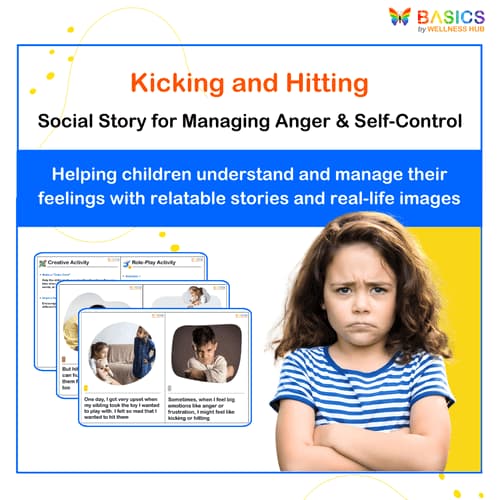
Kicking and Hitting – Social Story for Managing Anger & Self-Control
₹ 80.00
₹ 160.00
50% off
4.6 (52 ratings)

Flying in a Plane: A Social Story for Kids
₹ 80.00
₹ 160.00
50% off
4.6 (44 ratings)
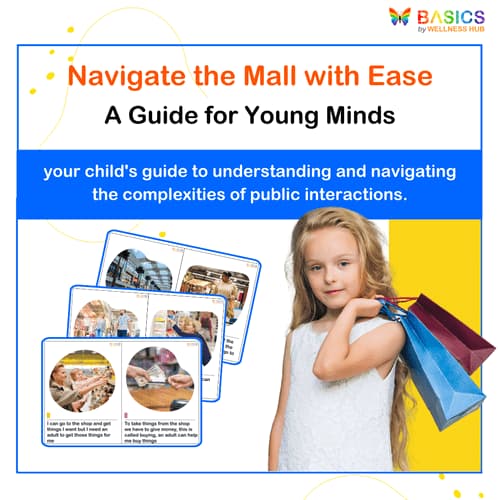
At the Mall: A Social Story for Kids
₹ 80.00
₹ 160.00
50% off
4.9 (60 ratings)
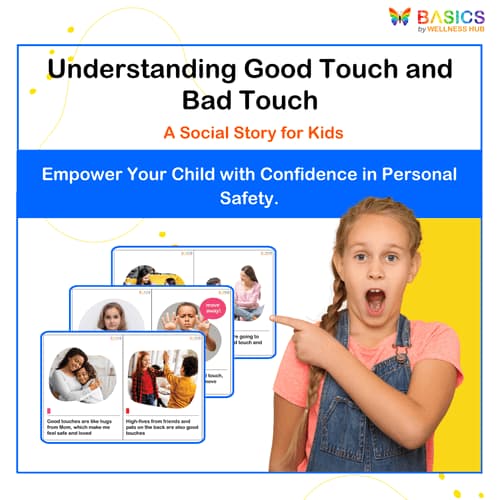
Understanding Good Touch and Bad Touch - A Child Safety Social Story
₹ 80.00
₹ 160.00
50% off
4.7 (46 ratings)
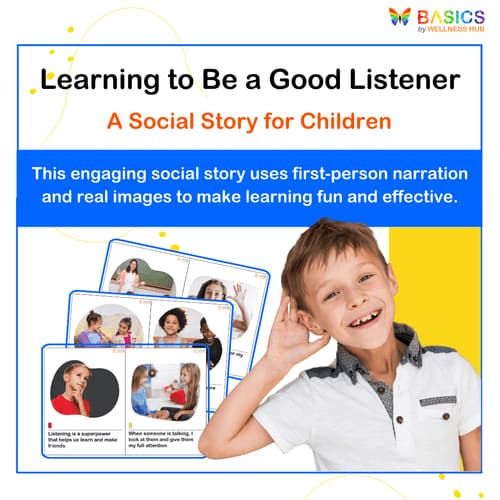
Learning to Be a Good Listener: Social Story for Kids
₹ 80.00
₹ 160.00
50% off
4.9 (58 ratings)
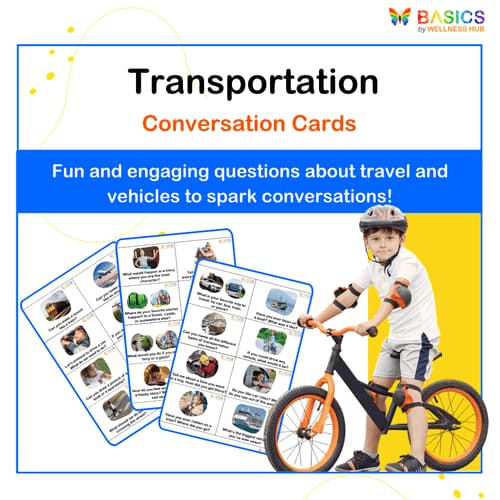
Conversation Cards - Transportation: Engage Kids with Fun Travel-Themed Questions
₹ 80.00
₹ 160.00
50% off
4.6 (48 ratings)
Real Parent Success Stories – How Physical Therapy Resources Help Kids Thrive
Our resources have positively impacted families and therapists, helping children make meaningful progress in speech and language development. Here’s what some of our users have shared:
The strength-building exercises have really helped my daughter. She’s more stable and confident in her movements, and it’s wonderful to see her progress.
Anna, Parent
These testimonials reflect how our resources make speech and language learning accessible and effective, empowering children and giving parents the confidence to support their growth.
Detailed Description
Introduction to Physical Therapy Resources for Children
Physical therapy plays a vital role in helping children develop essential motor skills, balance, strength, and coordination. These foundational skills are critical for daily activities and overall physical health, supporting a child’s independence and ability to engage in play, sports, and everyday routines. Our physical therapy resources provide structured activities that guide parents, educators, and therapists in promoting physical development in a fun and engaging way. From strength-building exercises to coordination activities, these resources help children improve mobility, balance, and flexibility, fostering growth and confidence.
How Our Resources Aid in Physical Development and Mobility
Our physical therapy resources are crafted to address various aspects of motor development, including strength, balance, and flexibility. Exercises focus on fine and gross motor skills, helping children with tasks like grasping, walking, and maintaining posture. Coordination activities build spatial awareness and control, while balance exercises support core stability. These tools are designed to make physical therapy engaging, using play-based activities to encourage movement, develop strength, and enhance overall physical fitness.
Types of Physical Therapy Resources We Offer
Strength-Building Activities: Our strength-building resources include activities that target core, arm, and leg muscles. These exercises are designed to help children build the strength necessary for sitting upright, walking, and other essential movements. Through fun, age-appropriate exercises, children develop the physical endurance needed for everyday activities.
Coordination and Motor Skills Exercises: Coordination activities focus on improving hand-eye coordination, balance, and spatial awareness. By practicing these exercises, children develop better control over their movements, which supports tasks like catching a ball, drawing, and navigating their surroundings.
Balance and Core Stability Exercises: Balance activities enhance a child’s ability to maintain stability and control. Using exercises that challenge their core muscles, children learn to keep their posture and balance, supporting physical confidence and reducing the risk of falls.
Flexibility and Mobility Routines: Our flexibility routines help improve joint mobility and muscle flexibility, essential for children’s physical comfort and range of motion. These exercises gently stretch and strengthen muscles, allowing children to move freely and comfortably in their daily activities.
Who Can Use These Resources?
Our physical therapy resources are versatile and beneficial for a range of users:
Parents: Use these resources at home to help children build strength, coordination, and flexibility in a familiar environment.
Teachers: Integrate physical activities into classroom routines to support gross motor development and encourage active learning.
Therapists: Apply these tools in therapy sessions to help children with specific physical needs, providing structured exercises that promote progress in motor skills and overall mobility.
These resources are designed to be easy to follow and adaptable, making it simple for anyone working with children to support physical development effectively and enjoyably.
Benefits of Physical Therapy Activities at Home
Practicing physical therapy exercises at home provides children with regular, gentle reinforcement of essential motor skills. These activities help parents support their child’s strength, balance, and coordination, making physical development a natural part of daily routines. For children with physical challenges, structured activities offer consistent, targeted practice that builds strength and confidence. By integrating physical therapy into daily life, parents can foster a proactive approach to health and movement, supporting their child’s independence and physical well-being.
Tips for Using Physical Therapy Resources Effectively
Using our physical therapy resources effectively can help children build strength, coordination, and confidence in movement. Here are some practical tips:
Start with Gentle Movements: Begin with gentle exercises that are easy for your child to perform, and gradually increase the intensity as they grow stronger and more comfortable with the activities.
Integrate Exercises into Daily Routines: Incorporate physical therapy exercises into daily routines, such as stretching before bed or practicing balance exercises during playtime. Consistent practice builds muscle memory and strength.
Use Play-Based Activities: Make exercises enjoyable by turning them into games. Activities like hopping, throwing, and balancing can be made fun and engaging, helping children stay motivated and excited to practice.
Adapt to Your Child’s Needs: Observe your child’s responses and adjust the exercises as needed to ensure they remain comfortable and engaged. Flexibility in the routine allows for steady, positive progress.
Celebrate Small Achievements: Recognize and praise your child’s efforts and progress. Positive reinforcement encourages them to continue practicing and achieving new milestones.
Real-Life Examples of Writing Skills Development with Our Resources
Our physical therapy resources provide practical, engaging ways for children to develop their physical skills. Here are some examples:
Building Core Strength with Balance Exercises: A parent might use Balance and Core Stability Exercises to help their child build core strength. Practicing standing on one foot or balancing on a soft surface improves muscle tone and stability, which are essential for sitting and standing.
Improving Coordination with Catching and Throwing Games: A teacher might use A teacher might use Coordination and Motor Skills Activities to engage students in catching and throwing exercises, improving hand-eye coordination and reflexes. This helps with tasks like writing, sports, and other physical activities.
Enhancing Mobility with Flexibility Routines: A therapist might use Flexibility and Mobility Routines to gently stretch a child’s muscles, supporting flexibility and range of motion. This promotes comfort and ease in daily activities, reducing stiffness and enhancing mobility.
Strengthening Leg Muscles with Squat Exercises: Parents can guide their child in Strength-Building Activities like simple squats to build leg strength, which supports activities like walking, running, and jumping, helping the child feel more capable and active.
These examples show how our resources can support physical growth and development, helping children gain confidence and independence in movement.
FAQs
Q1: How do I start using these resources with my child?
A1: Begin with simple exercises that your child can easily perform, such as balance or gentle stretching. As they gain confidence, you can introduce more challenging activities.
Q2: Which resources are best for improving balance?
A2: Our Balance and Core Stability Exercises are specifically designed to improve balance and core strength, essential for stability and posture.
Q3: How often should I use these activities?
A3: Aim for regular sessions—daily or several times a week, depending on your child’s comfort level. Short, consistent sessions are effective for reinforcing physical skills.
Q4: Are these resources suitable for children with mobility challenges?
A4: Yes, our resources are designed to support children with various physical needs, providing structured exercises that are adaptable to different mobility levels.
Related Topics and Further Learning for Parents
For parents interested in supporting their child’s physical development, the BASICS app offers additional resources and courses on motor skills and physical health:
Strengthening Core and Balance: A course that introduces activities for core stability and balance, helping children build a strong foundation for physical activities.
Coordination and Fine Motor Skills Development: Resources focused on exercises that improve hand-eye coordination, fine motor control, and spatial awareness, supporting physical confidence and dexterity.
Mobility and Flexibility for Comfort and Range of Motion: Tools and routines that promote joint mobility and muscle flexibility, helping children move comfortably and with ease.
Gross Motor Skills and Endurance Building: Activities that strengthen gross motor skills like walking, running, and jumping, enhancing physical endurance and confidence in movement.
These additional resources provide a well-rounded approach to physical development, equipping parents with tools to support their child’s health, strength, and mobility.